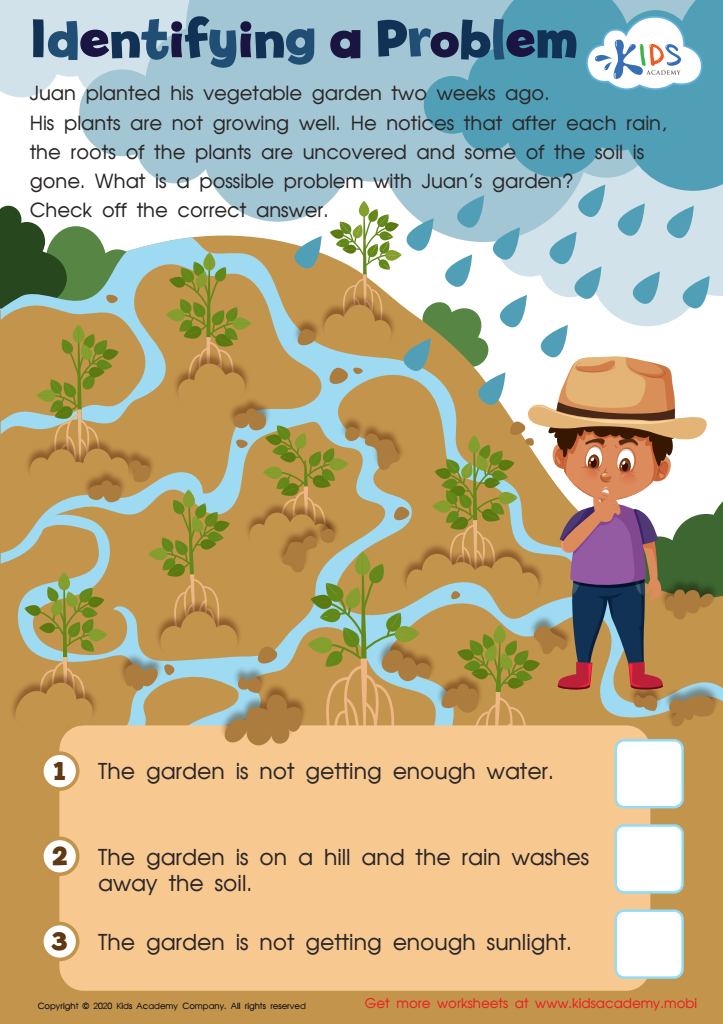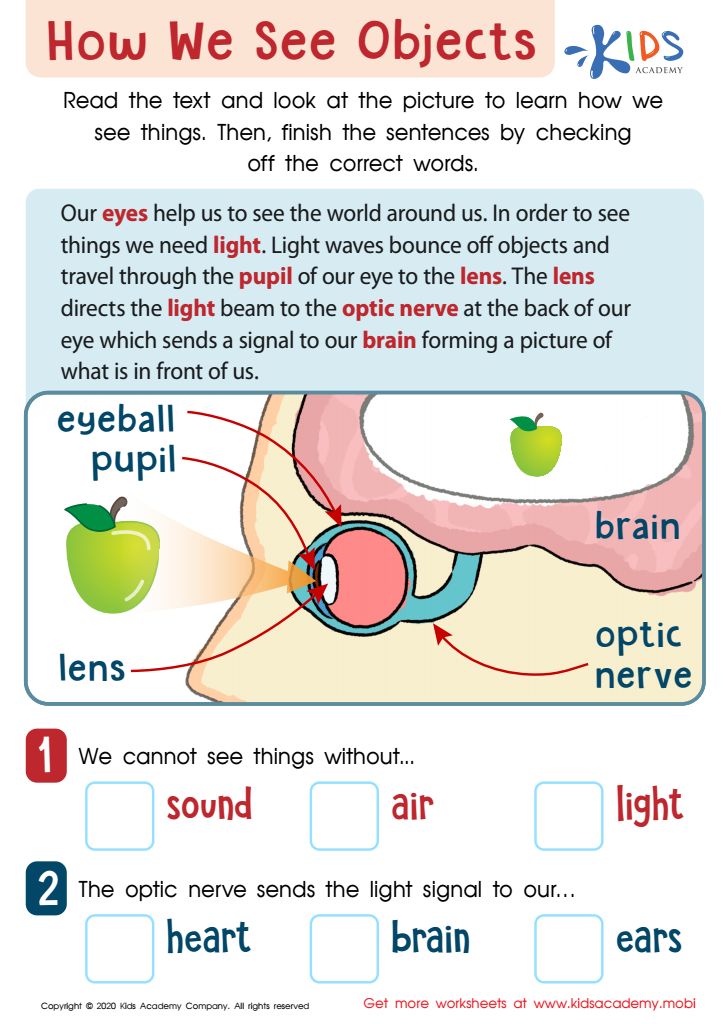Physical Science Worksheets for Ages 6-9
85 filtered results
-
From - To
Discover engaging and educational physical science worksheets for ages 6-9 at Kids Academy! Our carefully crafted worksheets cover essential topics, including matter, energy, force, and motion, providing young learners with a solid STEM foundation. Each activity encourages curiosity and hands-on exploration, making learning fun and effective. Our brightly designed worksheets are perfect for both classroom and home use, supporting the development of critical thinking and problem-solving skills. With our printable resources, your child can enjoy discovering the wonders of physical science while building a strong academic base. Start fostering a love for science today at Kids Academy!


Identifying a Problem Worksheet


Temperature Patterns Worksheet


Lights for Safety Worksheet


Safety Sounds Worksheet


Transparent, Translucent, or Opaque Worksheet


How Light Travels Worksheet


Light Reflections Worksheet


Which Is Brighter? Worksheet


Noisy Park Worksheet


How We Hear Sounds Worksheet


How We See Objects Worksheet


Seeing and Hearing Worksheet


Multiplying 5’s: Telling Temperature Part 2 Worksheet


Multiplying 5’s: Telling Temperature Worksheet


The Water Cycle Worksheet


Forces Worksheet


What Are Solids? Worksheet


Matter Word Search Worksheet


What Is Matter? Worksheet


Multiplying 3s with Force Worksheet


Electric Multiplication Facts Worksheet


Ben Franklin’s Invention Arrays Worksheet


Thomas Edison’s Invention Arrays Worksheet


In Front or Behind: Part 2 Worksheet
Parents and teachers should care about exposing children ages 6-9 to physical science because it fosters curiosity and a lifelong love for learning. Physical science explores the fundamental components of our world, such as matter, energy, force, and motion. Introducing these concepts early on helps children develop critical thinking and problem-solving skills, which are essential for academic success in all subjects.
At this young age, children are naturally inquisitive and learn best through hands-on experiences. Engaging activities, like simple experiments and observations, make learning physical science fun and memorable. For instance, exploring why ice melts or how magnets work cultivates a sense of wonder and encourages kids to question how things work, laying a strong foundation for scientific literacy.
Moreover, understanding basic physical science principles helps children better grasp the technological and environmental issues they'll encounter throughout life. For example, they start appreciating the importance of energy conservation and the impact of human activities on the planet.
By prioritizing physical science education, parents and teachers can help children become informed, responsible citizens equipped with the skills to navigate and influence an increasingly complex world. Ultimately, this early exposure supports a well-rounded education, bolstering both personal and intellectual development.

 Assign to My Students
Assign to My Students







.jpg)













